
A significant archaeological discovery has been made at Ayasuluk Hill and the St. John Monument in Selcuk, Izmir. Researchers have unearthed a tomb believed to belong to a Roman gladiator from the third century B.C. This tomb later reused in the fifth century A.D., contained the remains of 12 individuals.
The excavation, authorized by the Ministry of Culture and Tourism with support from various institutions, is led by associate professor Sinan Mimaroglu from Hatay Mustafa Kemal University’s Department of Art History.
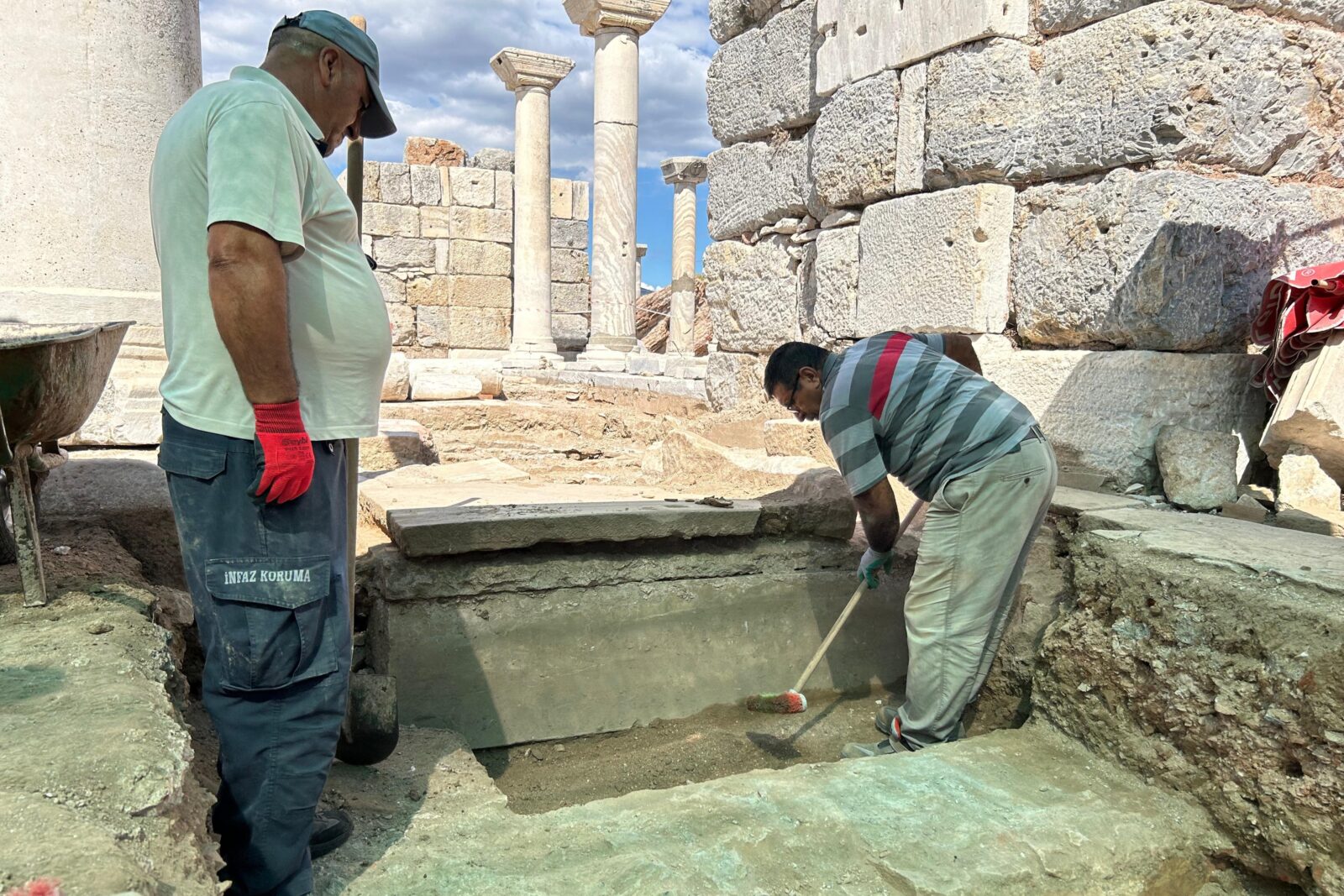
The team recently discovered a Roman tomb featuring twelve skeletons. The tomb, studied by associate professor Ertan Yildiz, has been identified as belonging to a Roman gladiator named "Euphrates." It features epigraphic inscriptions and three cross reliefs added during its later use in the fifth century.
This tomb is believed to date back to the third century B.C. and is similar to imperial tombs found in Istanbul, Marmara Island, and Syria.
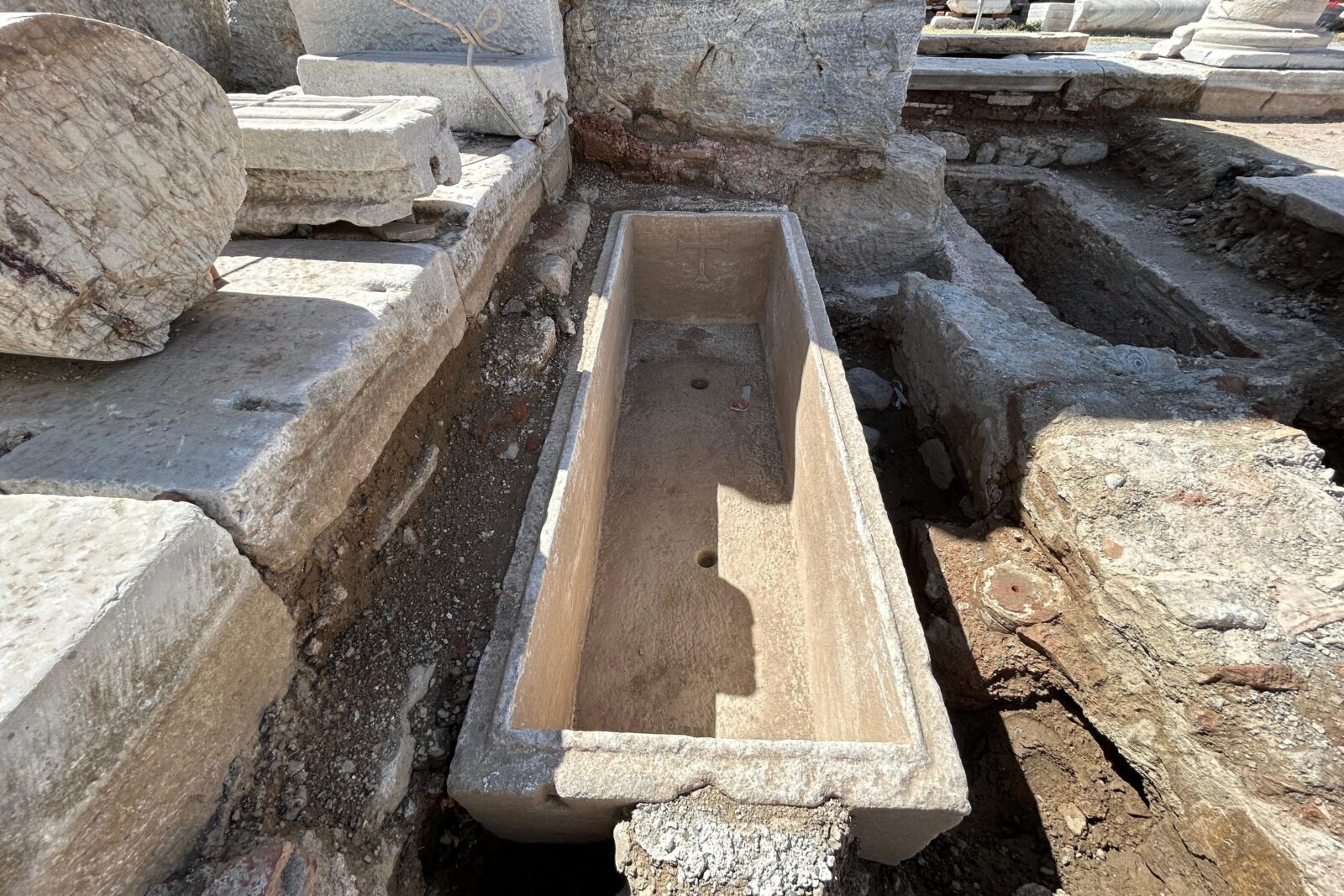
Mimaroglu expressed astonishment at finding a water channel, a drainage system, mosaics, and several tombs just 20 centimeters below the surface.
“We found one tomb and three tomb-like structures, with 12 individuals inside. This indicates a collective burial,” he stated. He emphasized the importance of this Roman tomb, which has exquisite epigraphic inscriptions and Christian symbols added during its later use.
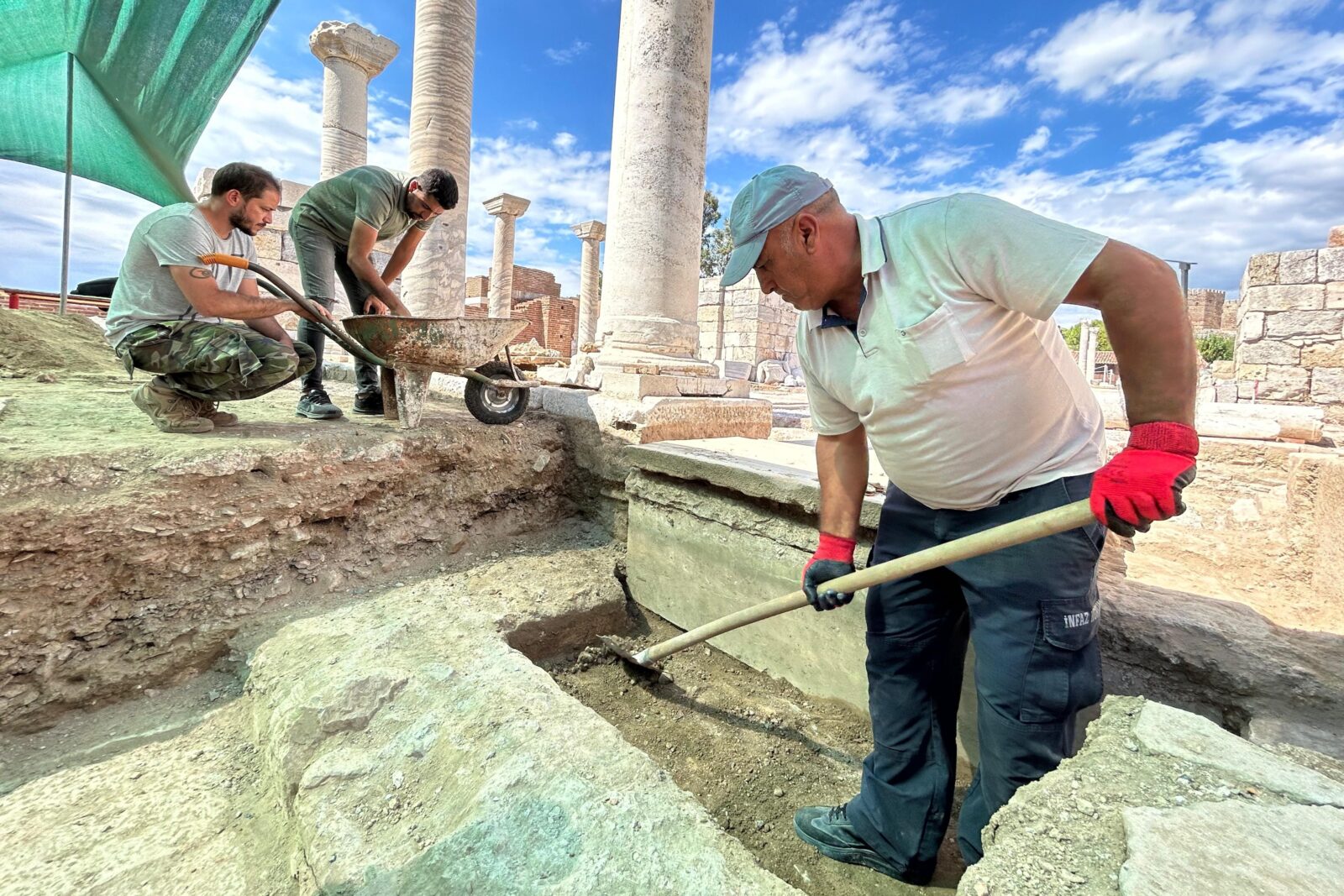
Mimaroglu provided information about the church associated with the tomb. Initially a small burial structure, it was later converted into a wooden-roofed basilica and eventually into a domed church during the reign of Emperor Iustinian I.
He noted, “The burials inside the church likely belong to the upper class or clergy, as it’s unlikely an ordinary person would be buried in such a meticulous manner within a church.”
Initial findings suggest the crosses inside the tomb were carved in the fifth century, while the crosses on the tomb’s lid might have been added in the seventh and eighth centuries. Archaeological evidence supports that the mosaic beneath was also altered after the time of Iustinian I.
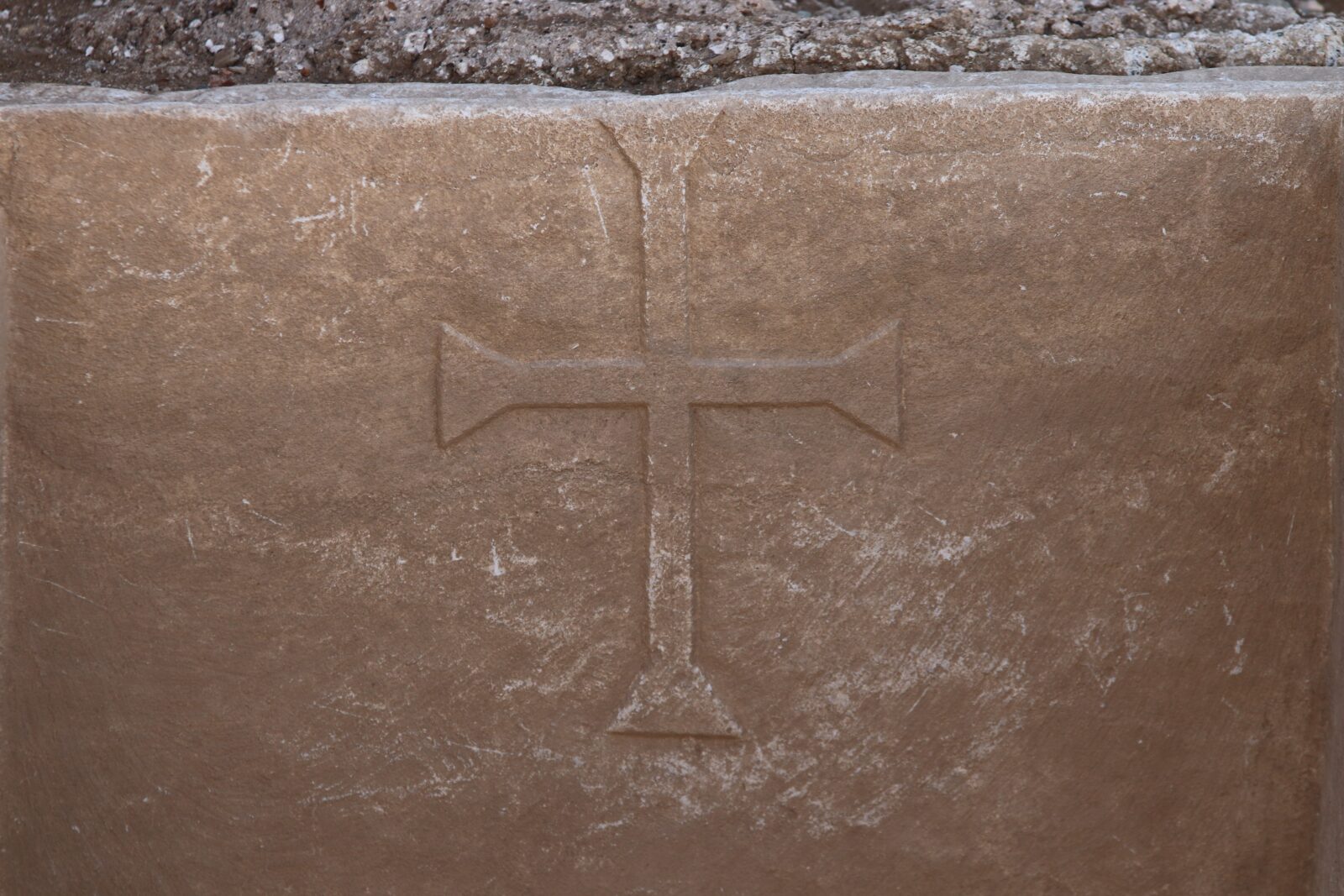
Regarding the cross reliefs within the tomb, Mimaroglu remarked that similar examples are found in imperial tombs in Istanbul, but this tomb was constructed with higher-quality materials.
He noted that similar tombs have been discovered in Marmara Island and Syria, though the cross designs differ. The team continues to search for comparable examples for publication.
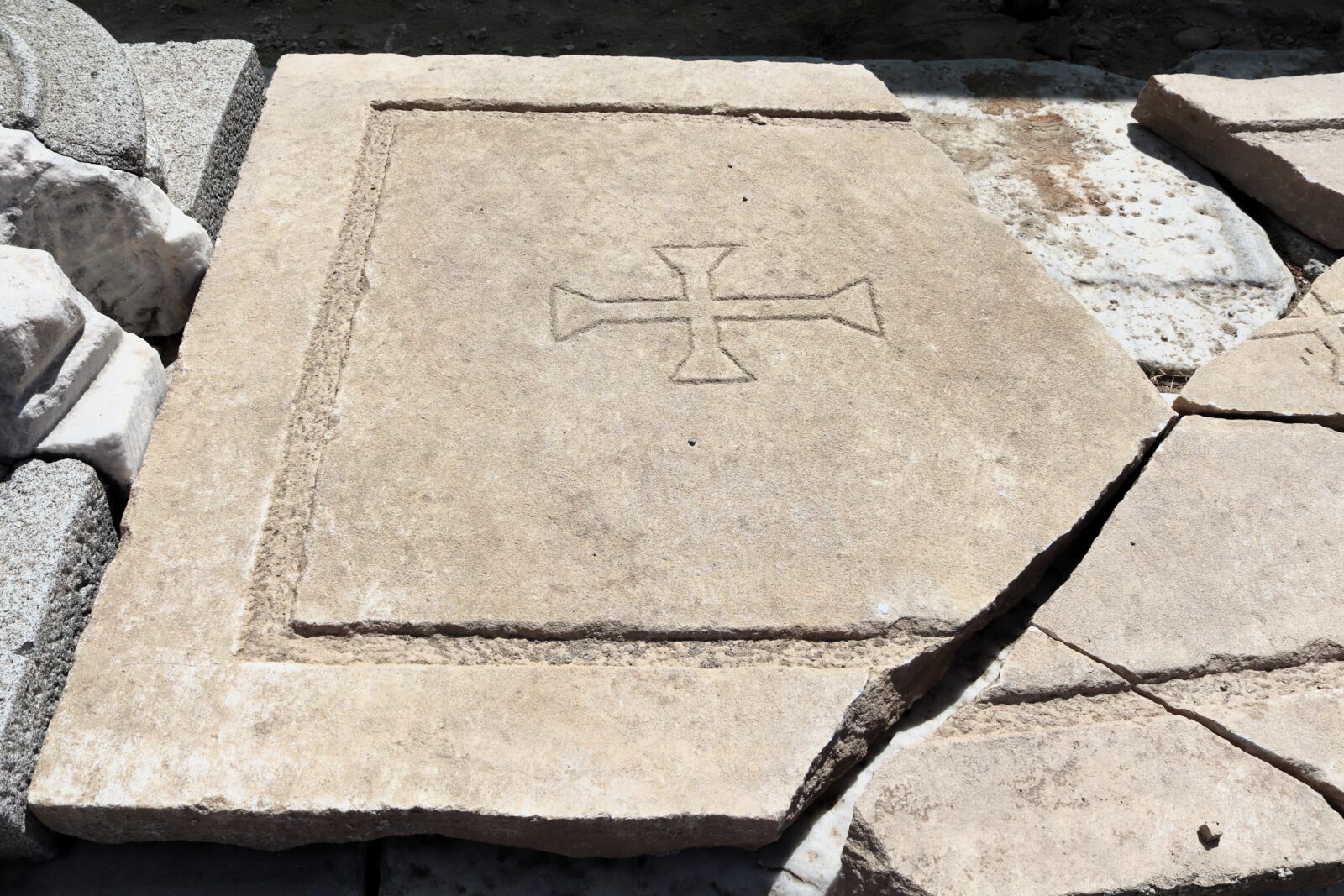
Mimaroglu mentioned the site's significance, stating it contains evidence of early Ephesus dating back to the second millennium B.C., with ceramics from the Early, Middle, and Late Bronze Ages.
Excavations began in the church of St. John in 1921-1922 under Greek archaeologist Soteriou and have continued under his direction since 2020.
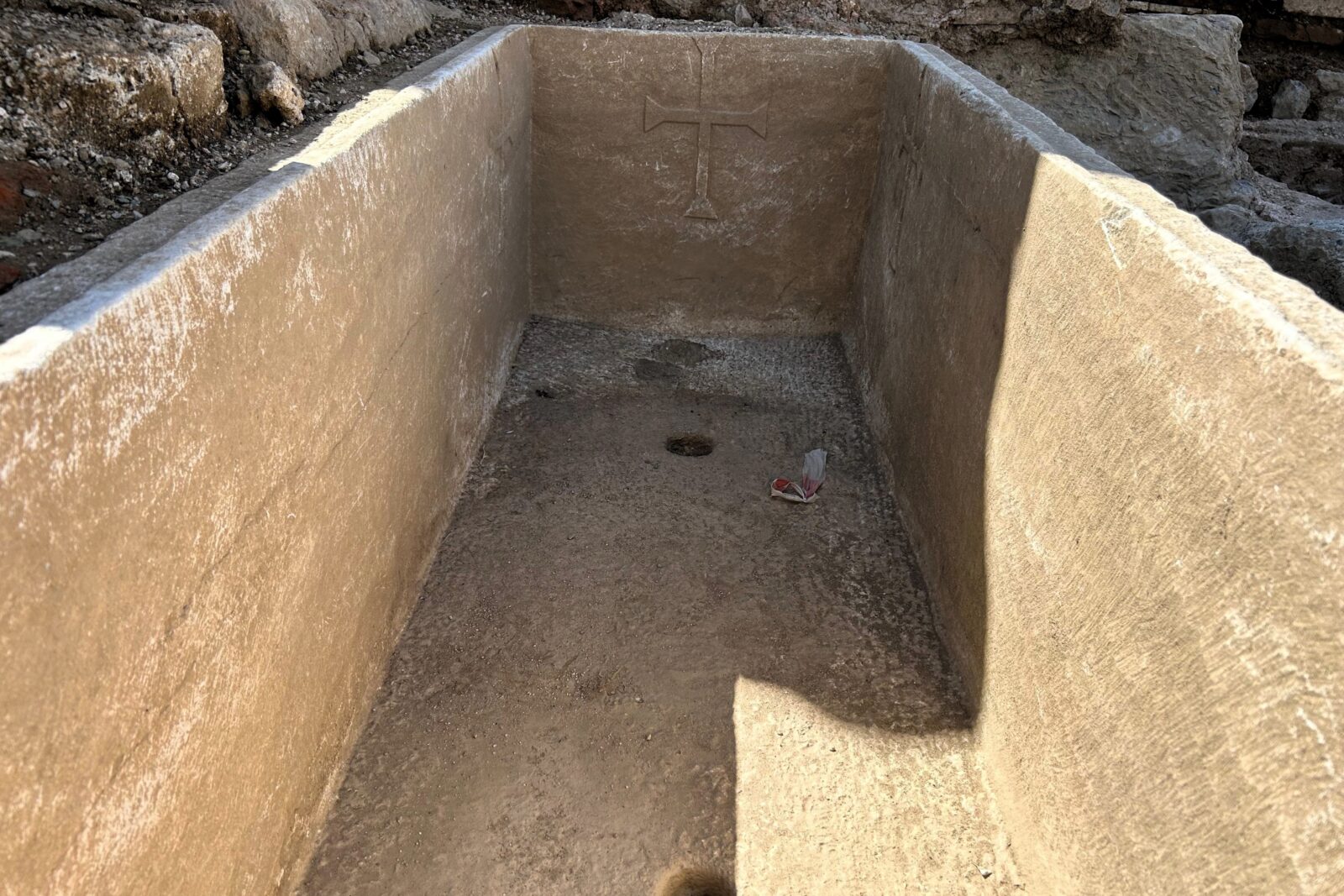
In 2023, georadar studies were conducted in the area, confirming findings from previous excavations by Hormann. Mimaroglu explained, “These excavations revealed a marble floor, dating back to the 6th century, consistent with the period of Iustinian I. This year’s discoveries affirm the presence of a marble flooring from the 5th century.”
The discovery of this ancient Roman gladiator's tomb not only sheds light on the burial practices of the time but also enriches our understanding of early Ephesus and its historical significance.